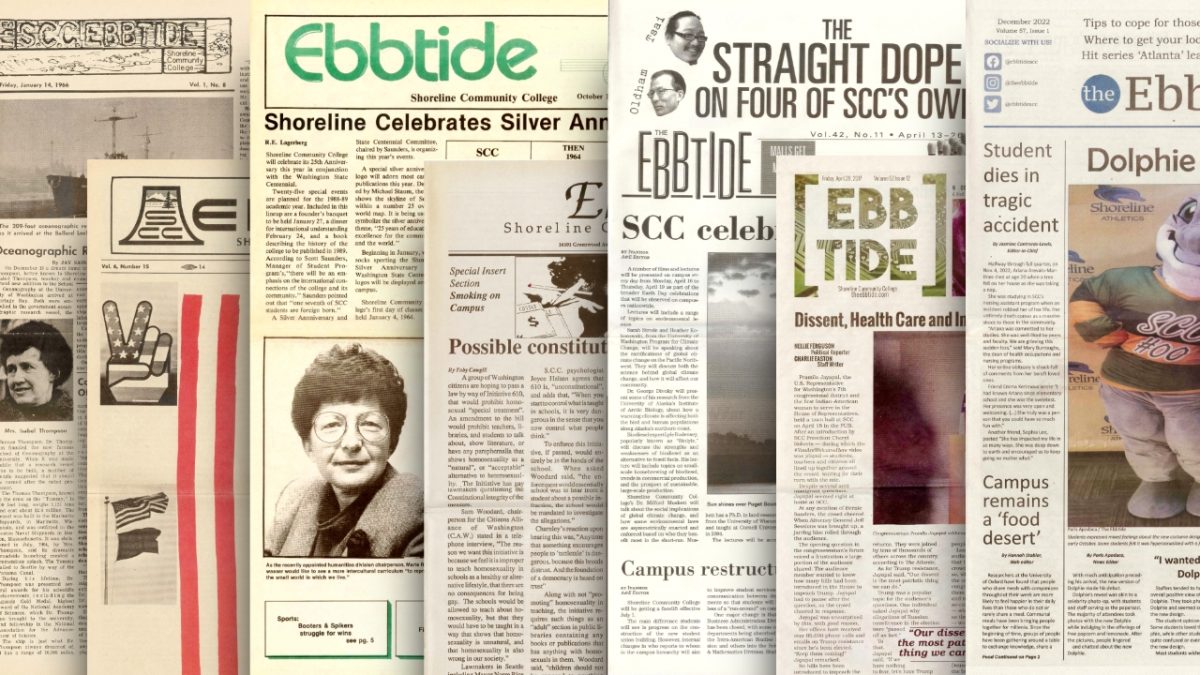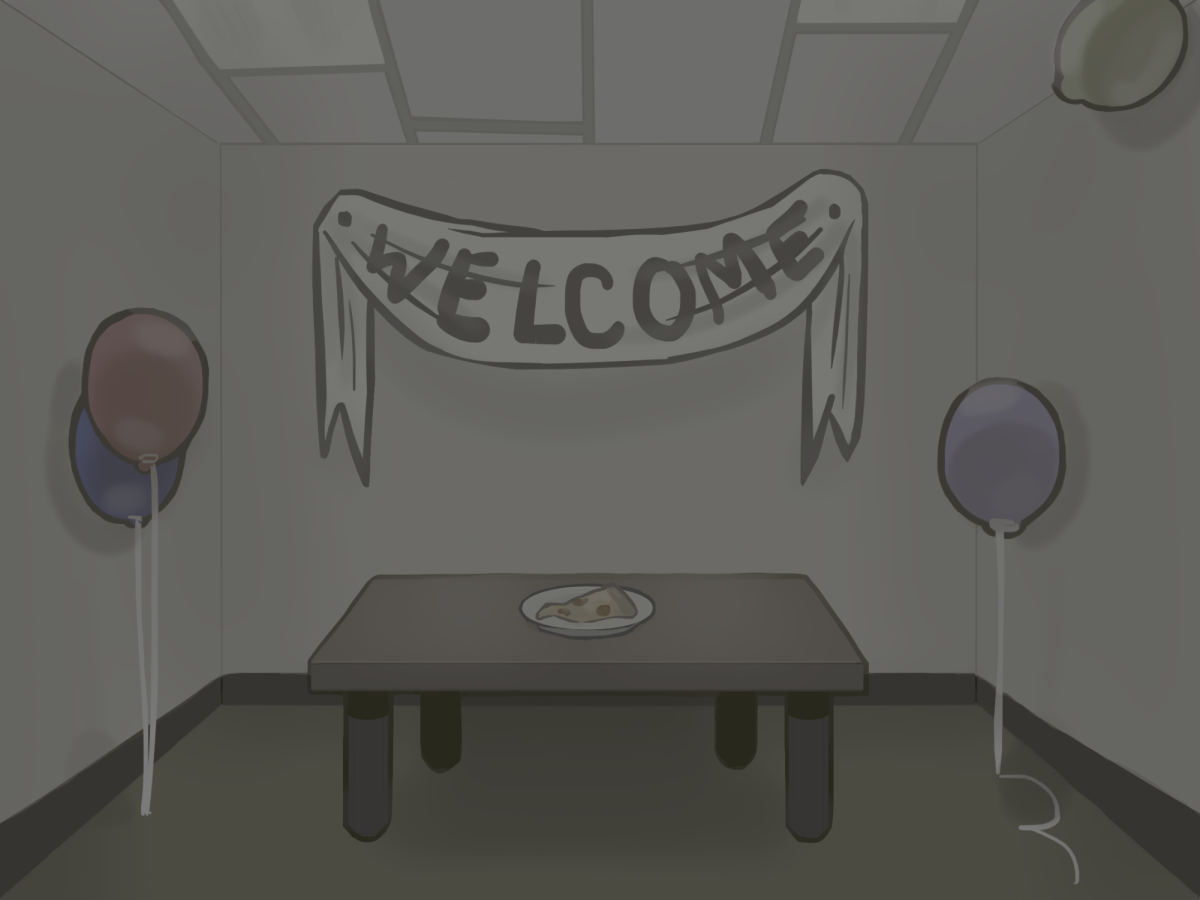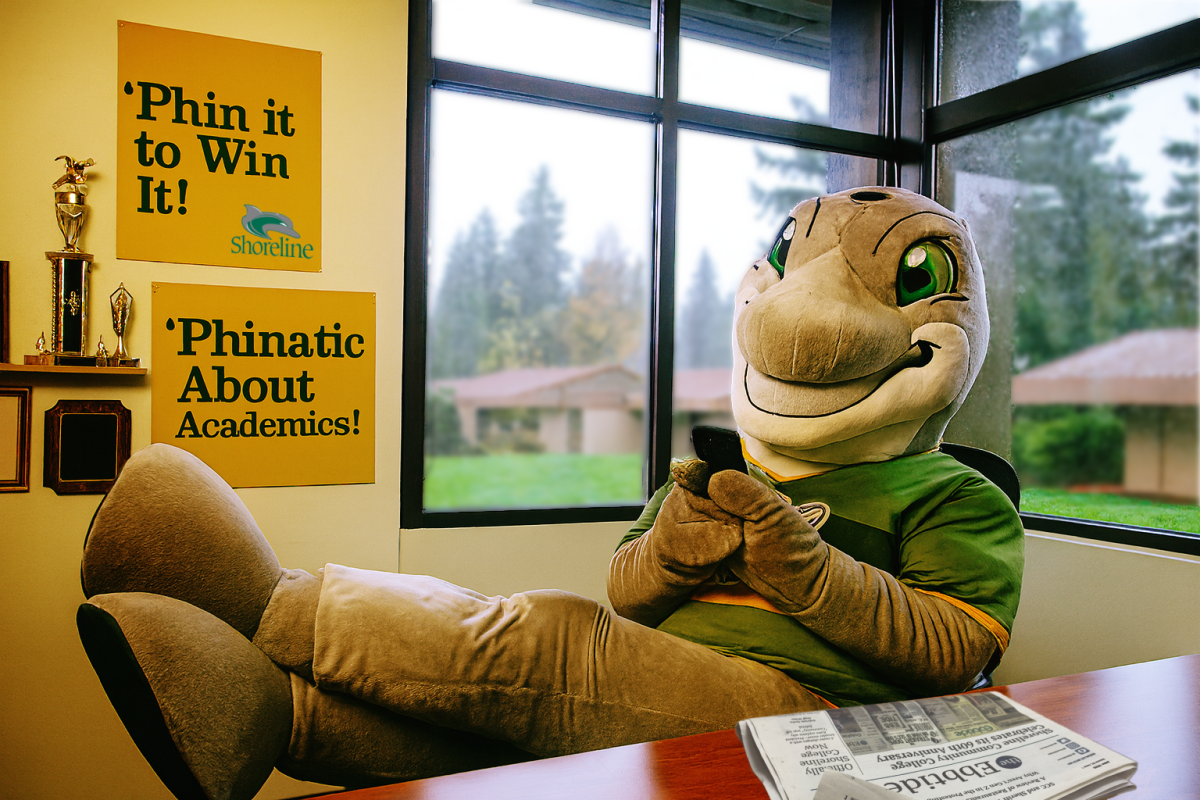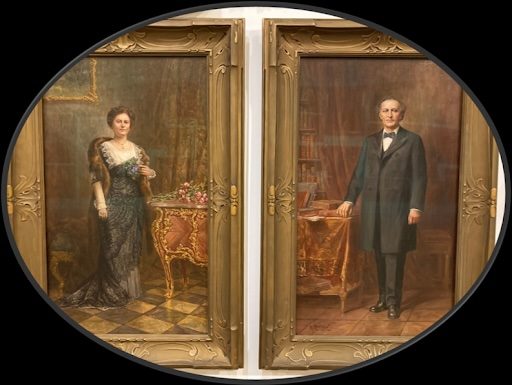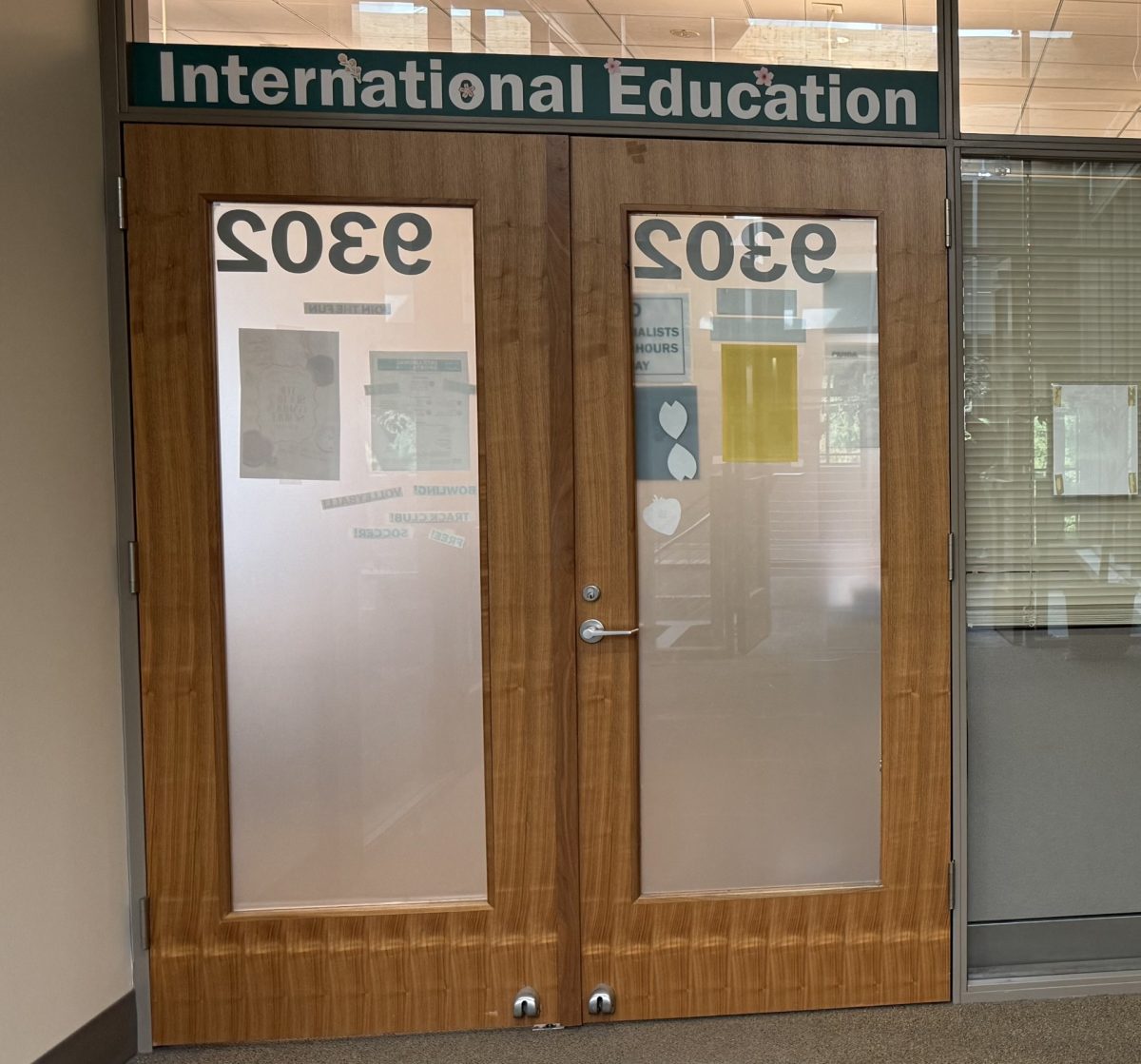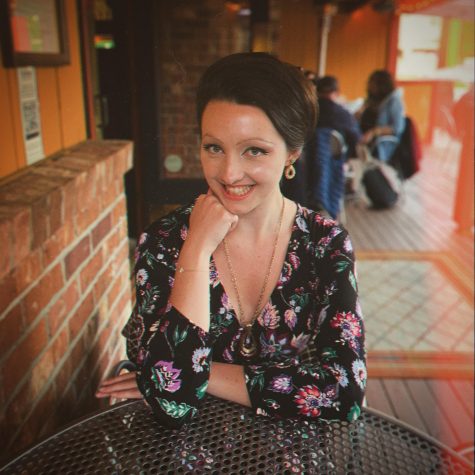WRITING WORKSHOPS OFFER VALUABLE ADVICE
The first two nights of SCC’s three novel-writing workshops provided enlightening glimpses into the minds of experienced writers.
These workshops offer free opportunities for anyone with an interest in writing to drop by the SCC library and listen to expert advice on how to steer their current stories toward completion.
The events take inspiration from National Novel Writing Month, popularly known as “NaNoWriMo.”
The annual non-profit event has been held in tradition of encouraging creativity since 1999.
Each November, writers across the globe are challenged to write 50,000 words in 30 days, with prizes awarded to every novel that meets the word count at the end of the month.
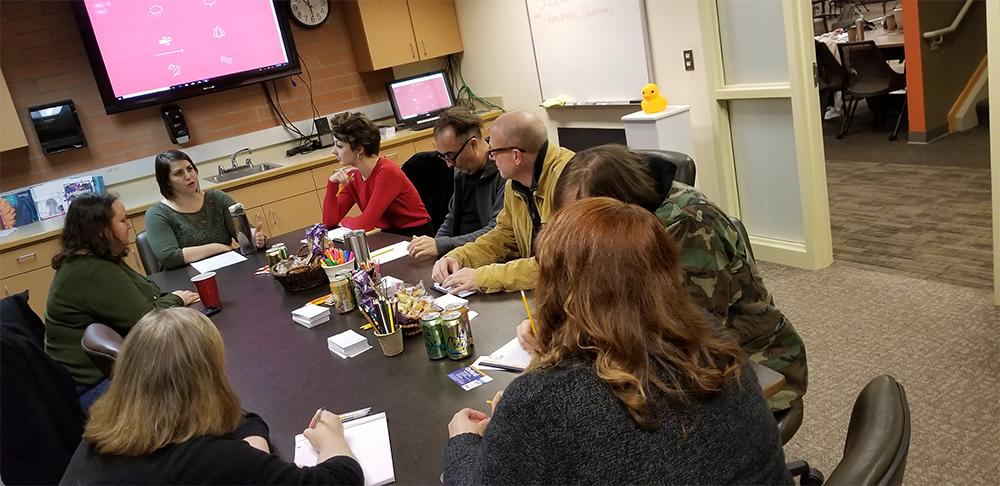
The first workshop, led by SCC English Professor and Spindrift Advisor Katie Johansen, debuted on Nov. 7 and led the month off to a great start.
Entitled “Novel Planning: Outlines, Mind Maps, and More,” the session offered planning strategies for writers eager to get their stories up and running without getting hung up on the details.
Johansen elaborated on unique techniques for story organization and introduced an exciting spin on traditional story maps by illuminating the simple beauty of index cards.
Novel Planning
Johansen says that when you fill out index cards, you can stack or spread ideas around while keeping ahold of the good ideas that sometimes become lost in the shuffle of copying and pasting within a text document on the computer. Plus, they allow for illustrations.
“You don’t have to follow any structure at all,” Johansen said.
The same concept applies to organizing research for nonfiction, in which you could label the cards with the source, topic and a quote.
If you don’t wish to keep a certain idea, Johansen suggested putting it aside — but keeping the card that it’s on. In fact, make a note to remind yourself that you still have it. After all, you never know what you might want to revisit.
Do you feel as though you repeat a lot of the same concepts throughout your story? Johansen offered a solution for this dilemma: She suggested printing out your story on paper and marking the redundancies you notice. “Figure out where you said it the best, and keep that,” she said.
Get Inspired
For those still in need of plot inspiration, Johansen suggested writing out conversations between your characters. She said that sometimes the characters in your novel can take on their own personalities and lead you places in the story that you hadn’t foreseen.
If you get the urge to start your story from the beginning when a single idea strikes, you can remedy this by jumping straight into the action. By writing down a good idea immediately and free-writing from there for around 15 minutes, it won’t be forgotten.
Set the Scene
To keep track of events in a story, make explicit notes in order to create a realistic sense of time for yourself and the reader.
A character would not be able to go from downtown Seattle to Tacoma in five minutes. If they are driving, for instance, note that they are in “Seattle at 10:00 p.m.,” followed by “Tacoma at 10:30 p.m.,” and so forth.
If your novel takes place at a point in history that you haven’t experienced, thorough research is key.
In this case, the most valuable aspects to analyze are the clothing, trends and language that was prevalent in that time period. Find out what products were popular and how they were advertised.
You can study maps, distances, and news and magazine articles of the time to get a sense of how people spoke. “You’re building a world that is already half-built for you,” Johansen said.
Where Does Dialogue Come From?
Another packed room of writers welcomed local author and SCC English teacher Michael Overa as he sat down to present his session, “Whisper, Blurt, Declare, Insist: Writing Dialogue Well.” With strong roots in fiction, Overa has an MFA in creative writing and over 30 publications to his name.
Overa’s personal favorite tactic for coming up with dialogue might surprise you: eavesdropping. Writing down other peoples’ interesting conversations can be a valuable way to learn how to incorporate realism into your writing.
You can also study and transcribe tapes to get a feel for the nuances in different speech, or analyze your favorite examples of existing dialogue to get yourself inspired.
In his book “Beyond Style,” renowned writing instructor Gary Provost said that “Good dialogue is real speech’s greatest hits.” Overa referenced this quote and related it to the commonly-experienced scenario of thinking up a great line you could’ve said in a conversation or argument that has already ended.
“Great writing is not only what you put in,” Overa said. “But what you leave out.”
Challenge Yourself
Overa handed out a sheet of paper containing a project for the group to partake in. It had a list of sentences spoken by one nameless character to another, which the participants had to create a setting and situation around.
This process can help writers become aware of the many ways in which standalone dialogue can be interpreted and how its context can be molded to reveal more about the characters than the actual dialogue itself.
In a second exercise, the group was asked to identify what makes the main character in their story unique, and to list the qualities that a character with the exact opposite traits would have.
Participants then wrote about these two personalities getting stuck in an elevator with each other, and to consider their interactions.
Learn From the Masters
Overa recommended three books which serve as great examples of dialogue: “The Body Artist” by Don DeLillo, for its in-depth opening scene which reveals a lot about its two characters, “Deception” by Philip Roth, due to the fact that it consists entirely of dialogue, and “Hills Like White Elephants” by Ernest Hemingway, because of its moments that reflect how people actually speak.
Overa mentioned a TED Talk by Andrew Stanton in which Stanton discusses storytelling in conjunction with his experiences working at Pixar. In it, he talks about “the rule of two plus two,” and how the audience never wants “four.” This analogy describes the phenomenon where an audience will subconsciously root for unexpected moments to happen in a story.
If you enjoy this advice and would like to hear more, things are just getting started: there is a full session left on Nov. 21. Anyone can drop in and gain free expert advice on writing, whether it’s for their NaNoWriMo submission or their own ideas.
Lauren Bryant, SCC librarian and manager of the library’s website, curated all three workshops and is happy with the results so far.
“We have so many talented instructors that are published,” Bryant said. “And we need to embrace and acknowledge them, or they’ll go away.”
The third workshop will be hosted by Vince Barnes, SCC ESL professor and author of four novels. Barnes’ workshop is called “Moving Forward (by Moving Backward): Finish Your Novel” and will provide key insight on how to end a story by gathering clues from what you have already written. Barnes’ advice will attempt to seamlessly pick up the reins where Johansen and Overa left off.
Nova Clark attended these events as a participant.
Links/Resources:
Provost, G. (1988). Beyond Style: Mastering the Finer Points of Writing. Retrieved from http://books.google.com






